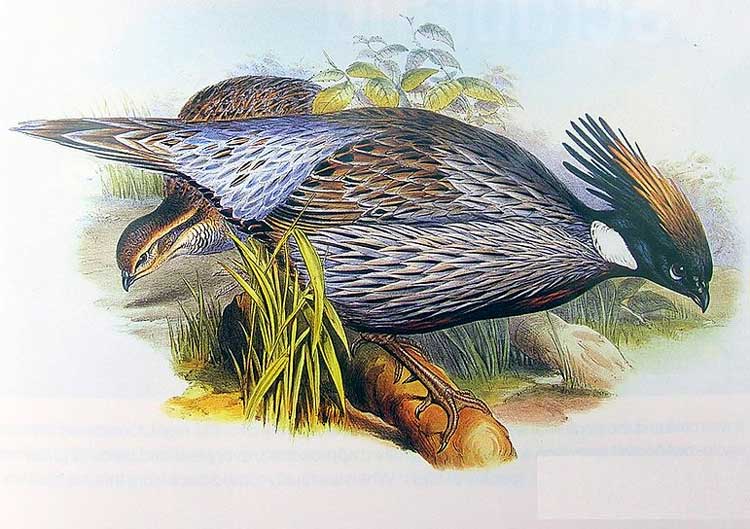Pucrasia macrolopha Cladus: Eukaryota Name Pucrasia macrolopha (Lesson, 1829) Reference Dictionnaire des Sciences naturelles 59 p.196 Vernacular names The Koklass (Pucrasia macrolopha) is a species of the Pheasant family, Phasianidae, and is the only species in the genus Pucrasia. Koklass Pheasant is a monotypic species of genus Pucrasia with nine subspecies recognised so far. These are: 1. Indian koklass (P. m. macrolopha), This entry deals with the subspecies P. m. biddulphi, which ranges from Kashmir east to Kullu in India. With exception of the subspecies P. m. nipalensis, P. m. castanea and P. m. macrolopha, which are endemic to the southern side of northwest and western Himalaya, other five are confined to China and Mongolia. The Koklass is a medium sized elusive bird confined to high altitude forests from Afghanistan to central Nepal, and in northeastern Tibet to northern and eastern China. Upper parts of male Koklass are covered with silver-grey plumage streaked velvety-black down the centre of each feather, and it has the unique feature of a black head, chestnut breast and prominent white patches on the sides of neck. The females differ from males in above characters and instead their upper parts are covered with pale brown plumage. Both sexes, however, have distinct elongated tails tipped with pale feathers. The males are known to weigh about 1135–1415g and the females, about 1025–1135g, with the body length varying from 58 – 64 cm and 18 – 22 cm respectively. Immature and juveniles resemble adult females in plumage pattern. Like the Western Tragopan, it does not extend its range above the tree line. One of the less colourful pheasants, the Koklass exhibits moderate sexual dimorphism. Though they skulk under bushes, which makes direct sighting difficult, they give loud chorus/predawn calls during the breeding season and during autumn, revealing their presence. They remain in pairs or small family groups throughout the year. They nest on the ground and spend the nights roosting on trees, or under rock overhangs. * BirdLife International (2004). Pucrasia macrolopha. 2006. IUCN Red List of Threatened Species. IUCN 2006. www.iucnredlist.org. Retrieved on 11 May 2006. Database entry includes justification for why this species is of least concern Source: Wikipedia, Wikispecies: All text is available under the terms of the GNU Free Documentation License |
|

